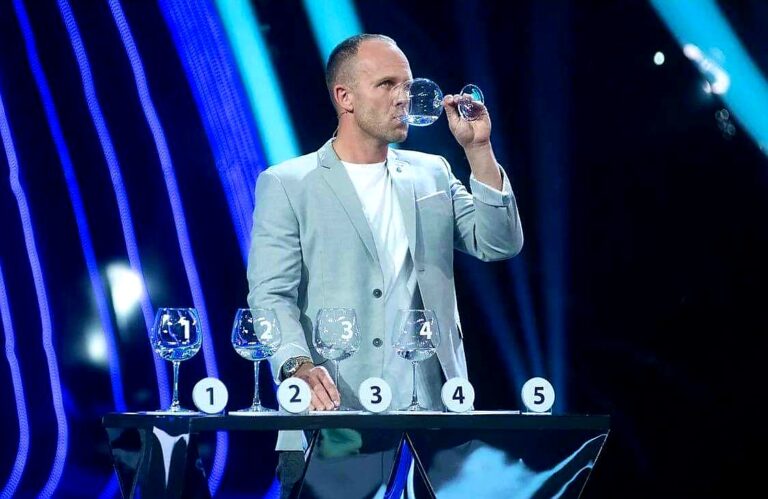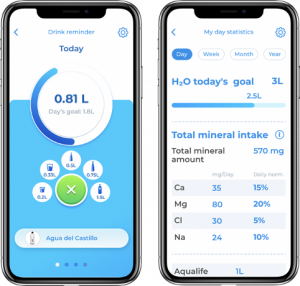
In the water choice app PickAqua, you can find all waters by its dominant element or various other value parameters.


Home » Water stories » Blog » 3 steps: how to choose water?

To answer this question, it is necessary to clearly understand what is what?
Similar to choosing a car, at the beginning we find out its year of manufacture, mileage, engine capacity, type of fuel and consumption. Then we go on a test drive and only then decide whether the car meets our needs.
It should be the same with water, because they all differ in origin, composition of minerals, purity, functionality and taste.
Most people perceive water as carbonated, still, tasteless or salty. Not realizing that every water has many different parameters that describe its properties.
The third step is the choice of water already according to its specific properties – it can contain a certain dominant, prefered mineral salt, or on the contrary – if one of the salts is in very little amounts.
For example, water that is low in sodium, or water that is low or high in magnesium and calcium, or any of the many characteristics that characterize water.



After we have chosen the water according to the basic parameters, we can test whether we like it and how it feels to drink it.
Feelings can be very different, from pleasant and joyful to unpleasant.
Before jumping into deep and complex analysis of the composition, it is important to understand the basic principles by which to navigate. For those particularly interested in alkaline water, exploring the best alkaline water brands might provide additional insights and options.
When traveling, and I am in an unfamiliar environment and choose water, the first thing I pay attention to is – is it natural water? A question may immediately arise here – how can water be natural or unnatural and how do they differ from each other?
In the European Union, all bottled waters can be divided into three basic groups:
* natural mineral water;
* natural spring water;
* drinking water.
Waters with the word “natural” in the category (natural mineral water or natural spring water) mean that it is always obtained only from underground sources and its composition has not been artificially influenced. There is nothing artificially added to it and nothing filtered that would significantly change the natural composition of the water.
Drinking water is also tap water. But when you read the inscription on the label “drinking water”, it does not necessarily mean that it is tap water. If the place of birth of the water – well number – is not indicated on the label, then it is very likely that the water was really filled from a central water supply source, from the tap.

All other types of water fall into one of the main basic categories mentioned above.
For example, in Germany, therapeutic or bio waters may only be in the natural mineral water category, because natural mineral water is the only type of water whose chemical composition does not change seasonally and is stable.
The stability of the water composition is important. For example, if the medicinal effect of water is studied, then, of course, there can be no question of a variable composition.
That is, through medical research, we find out the specific effect that water can have in optimizing our health. But if the mineral composition of the water changes seasonally, due to its origin, then the effect we expect from it also changes accordingly (because the mineral composition of the water is variable.)
Also in terms of taste, when you advise water to fine restaurants to accentuate the taste of food or a selected wine, the stability of the water composition is also important, because the desired taste effect must be predictable.

Therefore, among water connoisseurs, natural mineral water is highly valued due to its strict certification requirements. By the way, natural mineral water is the only food product that requires official state recognition.
The composition of natural spring water and drinking water may vary from year to year. Is it bad? No, it is what it is.
Natural spring water, just like natural mineral water, must always be bottled only at the water’s birth place.
On the other hand, the requirements for drinking water are the most flexible and it can be any type of water that meets the safety requirements of drinking water. It can also be surface water such as lake or river water. Drinking water may be filtered or artificially enriched with minerals.
There is still a misunderstanding in society that drinking water is what you can drink every day and natural mineral water is what you should drink in limited quantities. But it is not so!
Where did such a myth come from? It originated back in Soviet times, when the water classification system was different than it is today in the European Union.
Water with a total mineralization of less than 1000 mg/l of mineral salts was considered to be in the drinking water category.
At that time, drinking water, or table water, had a literal meaning. “Water that is safe to drink”. It is water that can safely stand on the table and can be drunk in unlimited quantities, because the amount of mineral salts in such water does not cause harm to the body when it is consumed in large quantities on a daily basis.
And, in turn, mineral water was considered to be water containing more than 1000mg/l of mineral salts. Further, these mineral waters with excess amounts of mineral salts are divided into semi-medicinal or medicinal waters.
Such a water classifier still exists in Russia, Belarus and many other countries of the former Soviet Union.
Returning to the European water categories, they have nothing to do with the amount of dissolved mineral salts, because any water contains some amount of mineral salts.
The only water that does not contain mineral salts is distilled water or water filtered with an osmotic filter. It robs the water of everything it has. Both desired content and unwanted content. Such water is completely empty and is not desirable for long-term drinking.
Any water that meets the above requirements can become natural mineral water. Ultra-light mineralized water – up to 50mg/l – can also be certified as natural mineral water.

I recommend using the water drinking reminder PickAqua, which regularly reminds not only to drink, but additionally motivates the user to drink water with various interesting facts about water at each reminder.
Go for smaller sips, but more often!
PickAqua drink reminder calculates at the same time the mineral amount you consume from the water.


In the European Union, according to the total amount of mineral salts, waters can be divided into:
* up to 50mg/l – ultra low content of mineral salts;
* from 50-500 mg/l – low content of mineral salts;
* 500-1500 mg/l – medium content of mineral salts;
* over 1500 mg/l – water rich in mineral salts.
Mostly, the “saltier” taste of water is felt, starting from above 2000 mg/l. And a strongly salty taste will be felt starting from 3000 mg/l and above.
The interpretation of the amount of mineral salts may be different in different countries, but the amount of mineral salts recommended in the European Union for the water we use on a daily basis in larger quantities is recommended up to 500 mg/l.
It is preferable to drink “heavier waters”, but in smaller quantities and not so often.
The total amount of mineral salts is not always indicated on the bottles.
That is why we have built a calculator in the PickAqua water choice app that automatically counts all the mineral salts dissolved in the water. In this way, it is very easy to get acquainted with the mineralization levels and characteristics of all available waters in the world.
Also, we created a new filter that allows you to filter waters according to their basic characteristics, making surfing in the water world easier and more pleasant.
You have to like the taste of the water that you drink. When you will find your water, you will feel, yes that’s my water.
No comment yet, add your voice below!